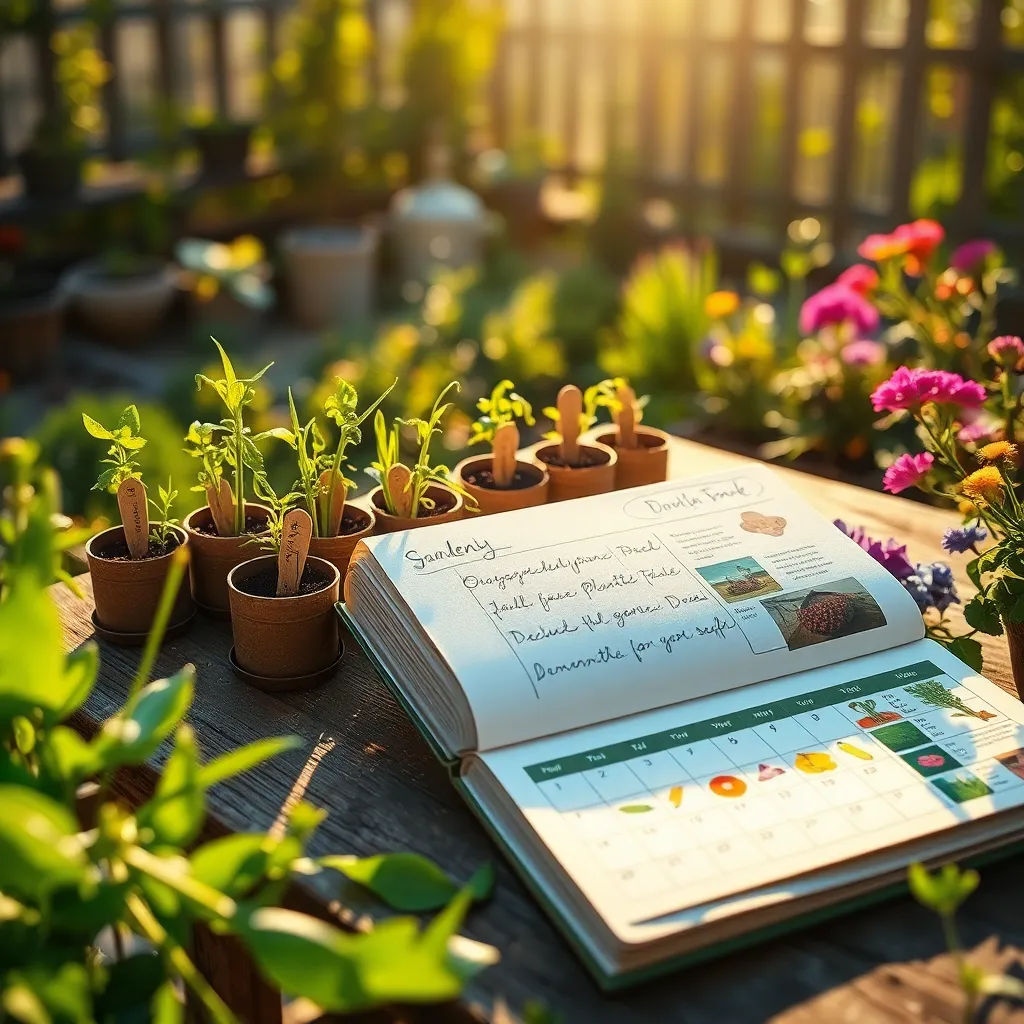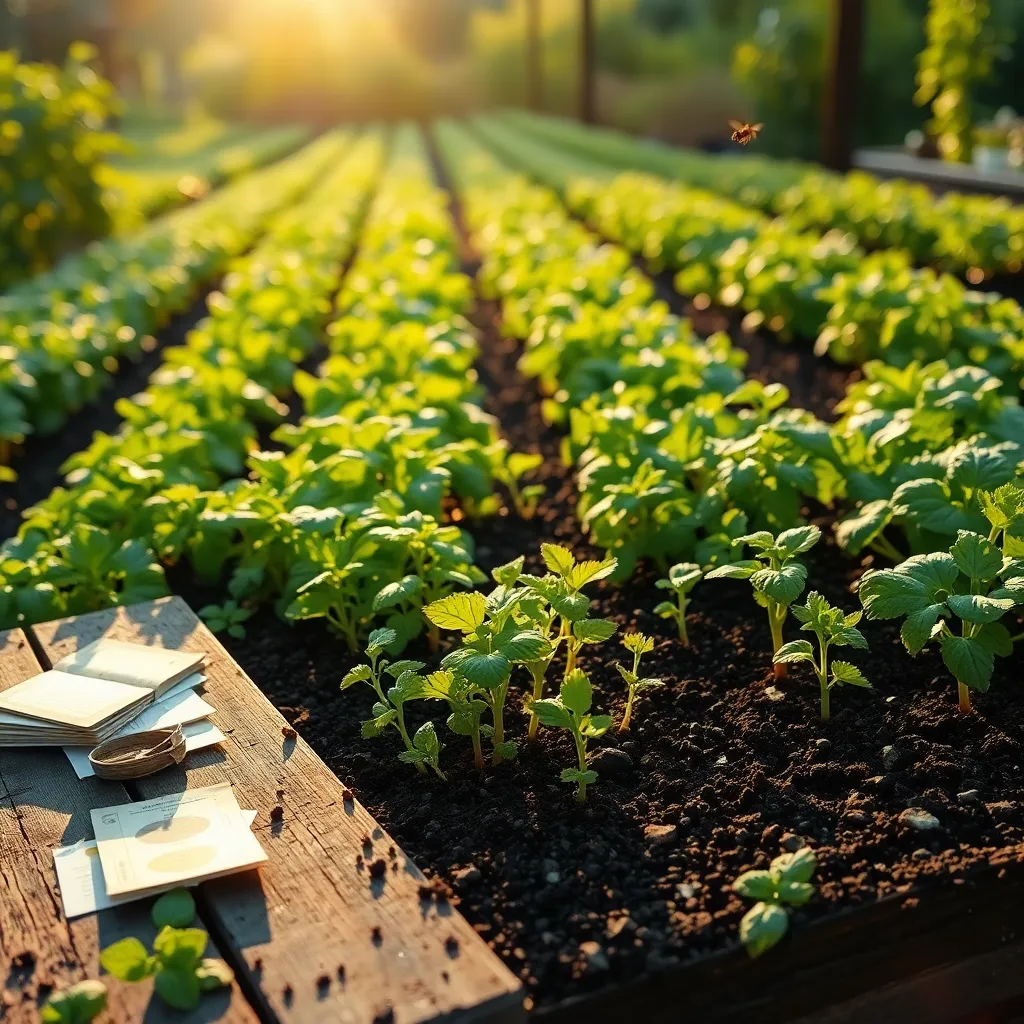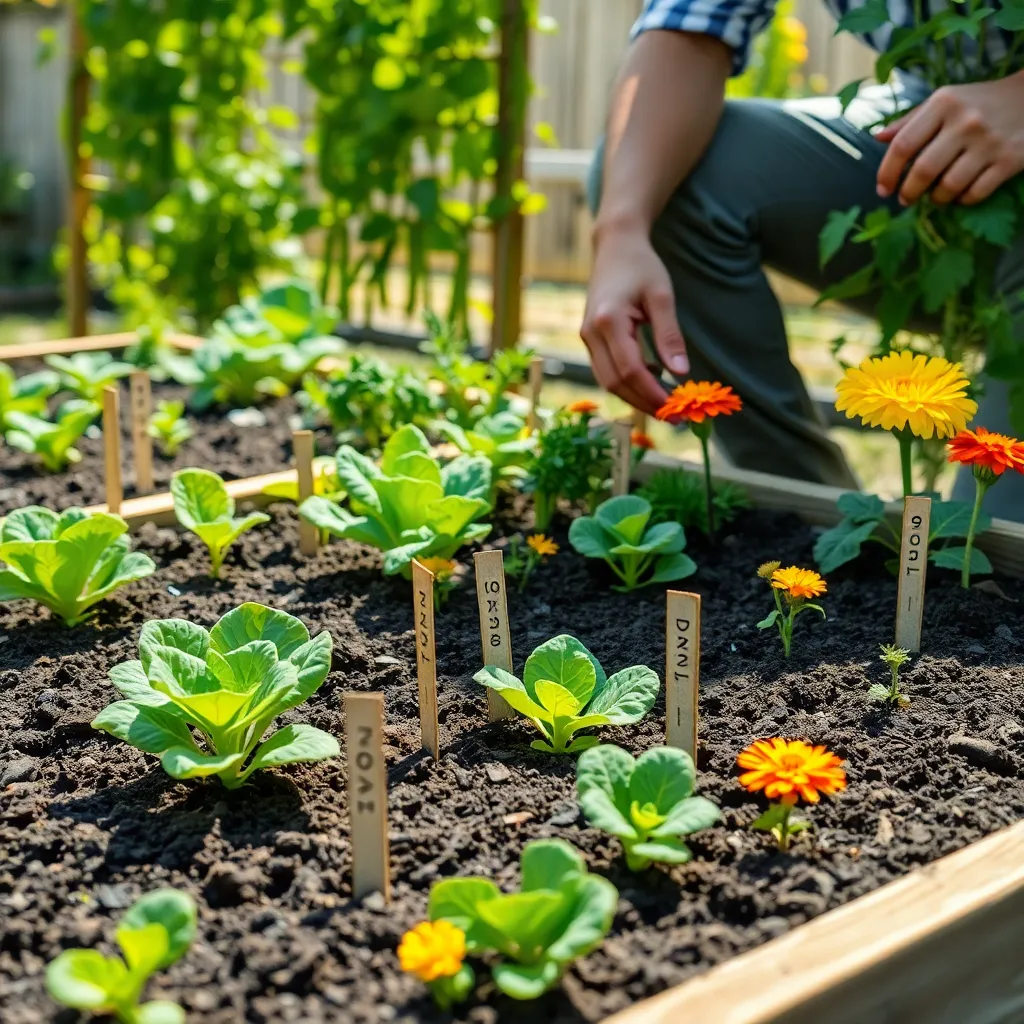Embarking on a gardening journey is akin to setting sail on a vibrant, ever-changing sea of growth and renewal. Whether you’re a novice green thumb or a seasoned soil whisperer, understanding the rhythm of the seasons is your compass to thriving plant life. Each season offers a unique opportunity to nurture specific plants, making the right timing essential for a lush, productive garden. This seasonal planting calendar serves as your guide, illuminating the path to success with practical insights and timely tips.
Gardening is an art that weaves together the cycles of nature with human creativity and care. By aligning your planting activities with the seasons, you not only ensure healthier plants but also maximize yields and blooms throughout the year. This article will walk you through the essentials of seasonal planting, providing you with a clear roadmap tailored for beginners yet rich with insights for the experienced gardener. From understanding frost dates to choosing the best plant varieties for each season, you’ll gain the confidence to cultivate a garden that flourishes in harmony with nature’s timetable.
As you delve into the world of seasonal planting, you’ll discover the joy of anticipation, patience, and reward that gardening uniquely offers. This is more than just a calendar—it’s an invitation to engage intimately with the natural world, fostering a deeper connection with the earth and its bountiful offerings. By the end of this guide, you’ll not only know what to plant and when, but also how to adapt these practices to suit your local climate and personal gardening goals. Let’s embark on this journey together, sowing the seeds of knowledge and reaping the bounties of a well-timed garden.
Understanding Seasonal Plant Cycles

Understanding the seasonal cycles of plants is crucial for successful gardening. Most plants have specific growth periods that align with the seasons, such as spring for planting and winter for dormancy.
Each plant has unique needs that correspond to these cycles, such as varying sunlight and temperature requirements. For instance, cool-season crops like lettuce thrive in the cooler temperatures of early spring or fall, while warm-season crops like tomatoes prefer the heat of summer.
To help your plants thrive, tailor your gardening activities to the seasonal needs of your plants. This might mean adjusting watering schedules, such as increasing watering during dry summer months or reducing it in cooler, wetter seasons.
Consider the soil as an essential component of seasonal plant care. Enriching your soil with compost in the fall can prepare it for nutrient-hungry spring plants, while mulching in summer helps retain moisture and control weeds.
- Spring: Focus on planting new seeds and nurturing seedlings.
- Summer: Ensure consistent watering and pest control.
- Fall: Harvest and begin preparing soil for next season.
- Winter: Protect dormant plants and plan for the next planting cycle.
Choosing Plants by Season

When choosing plants by season, it’s essential to consider which types thrive in your local climate during specific times of the year. Start by selecting cool-weather crops like lettuce and spinach for spring, as they prefer temperatures between 45°F and 75°F.
For summer, opt for heat-loving plants such as tomatoes and peppers, which flourish in full sun and well-drained soil. Ensure these plants receive at least 1 inch of water per week, adjusting as necessary during drought conditions.
Autumn is an excellent time to plant root vegetables like carrots and beets, which mature well in the cooler months. Plant them in loose, sandy soil to encourage deep root growth, and mulch to retain soil moisture.
Winter gardening can be rewarding with hardy plants like kale and Brussels sprouts that withstand frost. These plants benefit from a layer of mulch to insulate roots and need regular watering, even in cooler temperatures.
Advanced gardeners can experiment with extending the growing season using cold frames or row covers. These tools create a microclimate, protecting tender plants from unexpected frosts and allowing for an extended harvest period.
Creating a Monthly Planting Plan

Creating a monthly planting plan is an excellent way to ensure your garden thrives throughout the year. Begin by researching the optimal planting times for your specific plant varieties, considering both your local climate and the plants’ natural growing seasons.
Organize your plan by dividing your gardening year into monthly tasks. For each month, list the plants that should be sown, transplanted, or harvested, keeping in mind that timing is crucial for healthy growth and productivity.
Incorporate reminders for essential tasks such as soil preparation, watering, and fertilizing. Use a calendar or digital planner to schedule these tasks, ensuring you allocate time for regular garden maintenance to avoid becoming overwhelmed.
For beginners, start with easy-to-grow plants such as lettuce, radishes, and marigolds, which typically thrive with minimal effort. As you gain confidence, experiment with more challenging varieties, paying close attention to their unique growing needs such as specific soil types or watering frequencies.
Advanced gardeners can refine their planting plans by incorporating succession planting techniques. This involves staggering plantings of the same crop every few weeks to extend the harvest season and maximize garden productivity.
Remember to periodically review and adjust your planting plan based on what works best for your garden. Over time, you’ll develop a deeper understanding of your plants’ needs, allowing you to make informed decisions that lead to a more abundant and thriving garden.
Timing for Optimal Growth

Timing your planting is crucial for achieving optimal growth in your garden. Knowing when to sow seeds or transplant seedlings ensures that your plants thrive in the most favorable conditions. For beginners, understanding the concept of hardiness zones is essential. These zones help determine the best planting times for various plants based on regional climate patterns.
Start by identifying your local hardiness zone, which can be found through resources like the USDA Plant Hardiness Zone Map. This information allows you to plan your planting schedule, ensuring you avoid unexpected frosts or extreme heat. A basic tip is to plant cool-season crops like lettuce and spinach in early spring or fall. However, warm-season crops such as tomatoes and peppers should be planted after the last frost date.
Advanced gardeners might consider extending their growing season with techniques such as using cold frames or row covers. These tools can protect young plants from unexpected weather changes and help you start planting earlier. For optimal soil preparation, ensure it is well-draining and enriched with organic matter, like compost, to support robust root development. Regularly testing your soil’s pH and nutrient levels can also provide insights into tailored amendments necessary for your garden’s success.
Another practical approach is to stagger your plantings, a technique known as succession planting, which can maximize harvest times. By planting in intervals, you can enjoy fresh produce throughout the growing season rather than all at once. Watering is another critical element—ensure consistent moisture, especially during germination and dry spells, but avoid waterlogging. Drip irrigation systems can offer even moisture distribution and reduce water waste, giving your plants the best chance to prosper.
Adjusting to Climate Changes

Climate changes are affecting gardening practices, requiring us to adapt for better success. By observing local weather patterns, gardeners can make informed decisions about which plants to grow and when to plant them for optimal results.
One practical step is to choose plants that are more resilient to temperature fluctuations. Native plants are often a good choice, as they are naturally adapted to the local climate and require less maintenance.
Adjusting watering practices is also crucial in response to changing climates. In regions experiencing less rainfall, installing a drip irrigation system can help conserve water while ensuring plants receive consistent moisture.
For advanced gardeners, experimenting with microclimates can offer new opportunities. By using techniques like windbreaks or shade cloths, you can create specific growing conditions that protect sensitive plants from extreme weather.
Conclusion: Growing Success with These Plants
As we wrap up our exploration of the ‘Seasonal Planting Calendar For Beginners’, let’s revisit the five key relationship concepts that can blossom from this unique gardening journey: understanding the importance of timing in nurturing relationships, recognizing the diverse needs of different seasons in a partnership, embracing patience and persistence as you cultivate growth, appreciating the beauty of small, consistent efforts, and celebrating shared achievements that strengthen your bond. These concepts don’t just apply to gardening; they are the foundation for any thriving relationship.
To take immediate action, consider identifying one relationship area you want to nurture this season, just as you would a new plant. Start with small, deliberate steps, such as setting aside quality time or expressing gratitude more often.
Don’t forget to bookmark this article for ongoing reference. As the seasons change, you can return to these insights to continuously enrich your relationships. Remember, the seeds of effort you plant today will yield the blossoms of tomorrow’s relationship success. With each season, your relationships can grow stronger and more resilient, just like a well-tended garden.

